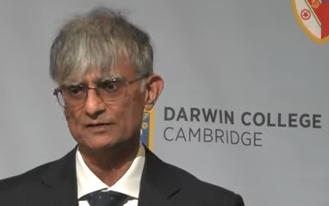News
Isolation of Atomic Mechanisms: the Choreographer at Play
16 March 2023

Emeritus Tata Steel Professor of Metallurgy at the University of Cambridge, as well as Professor of Metallurgy at Queen Mary University of London, Harry is a Fellow at Darwin and co-organiser of this year’s lecture series. He was knighted in 2015 in recognition of his development of new forms of steel, including the carbide-free steel now in use in the railway lines in the Channel Tunnel.
Harry’s lecture will explore the movement of atoms during a structural change, a process which he compares with dance. “Atoms in solids can be arranged in periodic patterns. A good two-dimensional analogy is wallpaper, where a motif is repeated indefinitely to generate a patterned roll of paper,” he explains.
“Unlike the pictures on wallpaper, the atomic patterns in metals are not frozen. They can be stimulated to change, by deformation, through the application of magnetic or electrical fields, by the application of heat or during cooling to cryogenic temperatures, or during cataclysmic events. These changes in atomic arrangements can dramatically influence the properties of the metal, sometimes rendering it useless and at other times offering features that can improve the quality of life. Revealing the choreography of atoms during a structural change by isolating the precise mechanism, is therefore important in the design of metallic materials. On occasions, the movement is graceful with an orderly, almost predictable collective motion that causes the object to change its shape in a manner visible to the naked eye. The resulting internal structure strengthens and toughens the metal. On the other hand, there can be random movements which are more akin to chaotic dance. Sometimes, when there is a mixture of small and large atoms, there can exist both disciplined and disorderly trajectories of atoms.
In this talk, I will explain how we can isolate and study the dance of the atoms and illustrate how with this understanding, we assume the role of a choreographer in creating some amazing materials.”
| People: |
Updated by: Harry Bhadeshia

